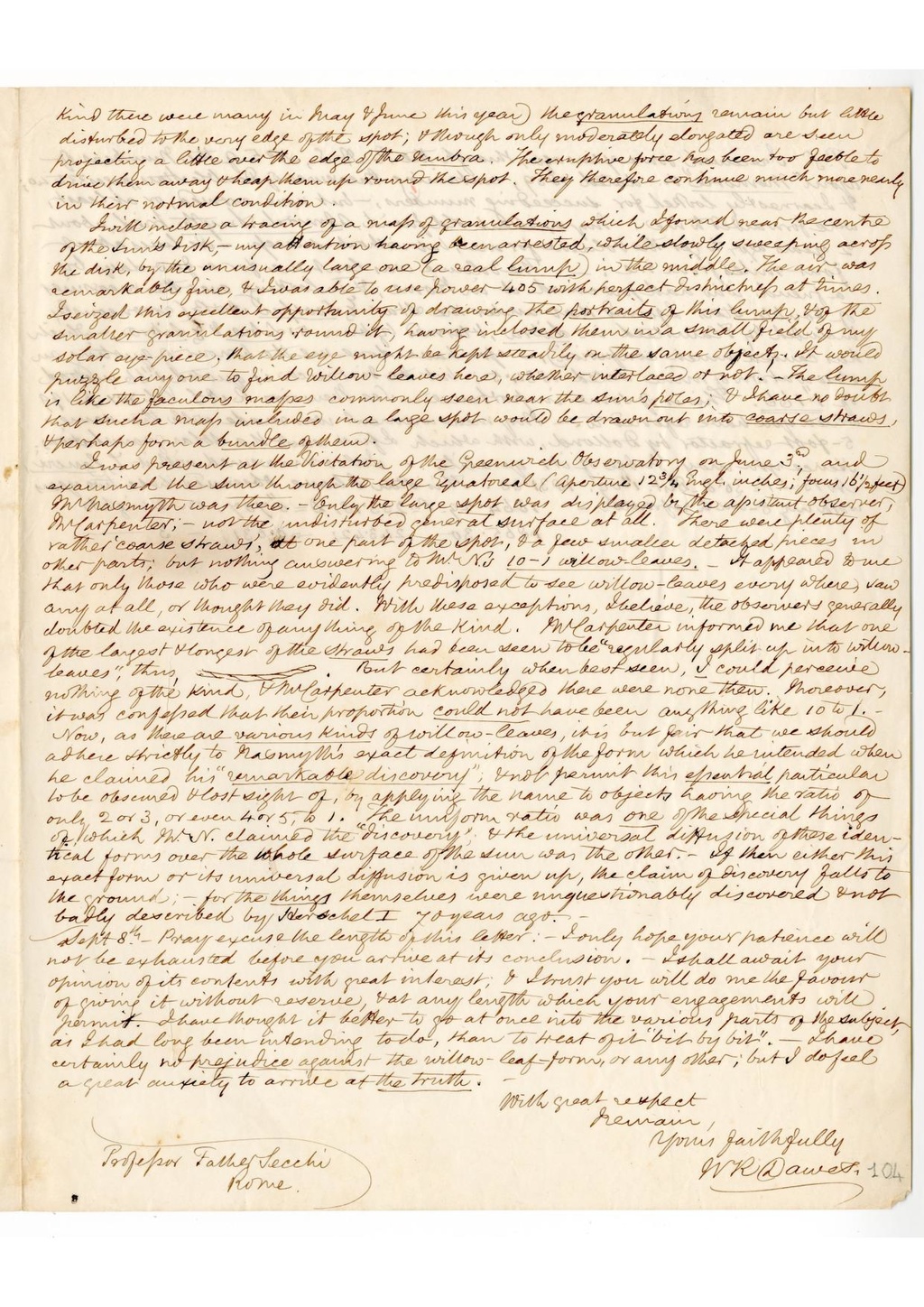kind there were many in May and Jun this year) the granulations remain but little disturbed to the very edge of the spot; and though only moderately elongated are seen projecting a little over the edge of the umbra. The eruptive force has been too feeble to drive them away and heap them up round the spot. They therefore continue much more nearly in their normal condition.
I will inclose a tracing of a mass of granulations which I found near the centre of the Sun's disk, - my attention having been arrested, while slowly sweeping across the disk, by the unusually large one (a real lump) in the middle. The air was remarkably fine, and I was able to use power 405 with perfect distinctness at times. I seized this excellent opportunity of drawing the portraits of this lump, and of the smaller granulations round it, having inclosed them in a small field of my solar eye-piece, that the eye might be kept steadily on the same objects. It would puzzle any one to find willow-leaves here, whether interlaced or not. - The lump is like the faculous masses commonly seen near the sun's poles; and I have no doubt that such a mass included in a large spot would be drawn out into coarse straws, and perhaps form a bundle of them.
I was present at the Visitation of the Greenwich Observatory on June 3rd, and examined the sun through the large Equatoreal (aperture 12¾ Engl. inches; focus 16½ feet) Mr. Nasmyth was there. - Only the large spot was displayed by the assistant observer, Mr. Carpenter; - not the undisturbed general surface at all. There were plenty of rather 'coarse straws', at one part of the spot, and a few smaller detached pieces in other parts; but nothing answering to Mr. N.'s 10-1 willow-leaves. - It appeared to me that only those who were evidently predisposed to see willow-leaves every where, saw any at all, or thought they did. With these exceptions, I believe, the observers generally doubted the existence of any thing of the kind. Mr. Carpenter informed me that one of the largest and longest of the straws had been seen to be "regularly split up into willow-leaves", thus, . But certainly when best seen, I could perceive nothing of the kind, and Mr. Carpenter acknowledged there were none then. Moreover, it was confessed that their proportion could not have been anything like 10 to 1. - Now, as there are various kinds of willow-leaves, it is but fair that we should adhere strictly to Nasmyth's exact definition of the form which he intended when he claimed his "remarkable discovery"; and not permit this essential particular to be obscured and lost sight of, by applying the name to objects having the ratio of only 2 or 3, or even 4 or 5, to 1. The uniform ratio was one of the special things of which Mr. N. claimed the "discover:' and the universal diffusion of these identical forms over the whole surface of the sun was the other. - If then either this exact form or its universal diffusion is given up, the claim of discovery falls to the ground; - for the things themselves were unquestionably discovered and not badly described by Herschel I 70 years ago. -
Sept. 8th. - Pray excuse the length of this letter: - I only hope your patience will not be exhausted before you arrive at its conclusion. - I shall await your opinion of its contents with great interest; and I trust you will do me the favour of giving it without reserve, and at any length which your engagements will permit. I have thought it better to go at once into the various parts of the subject, as I had long been intending to do, than to treat of it "bit by bit". - I have certainly no prejudice against the willow-leaf-form, or any other; but I do feel a great anxiety to arrive at the truth. -
With great respect
I remain,
Yours faithfully
WR Dawes
